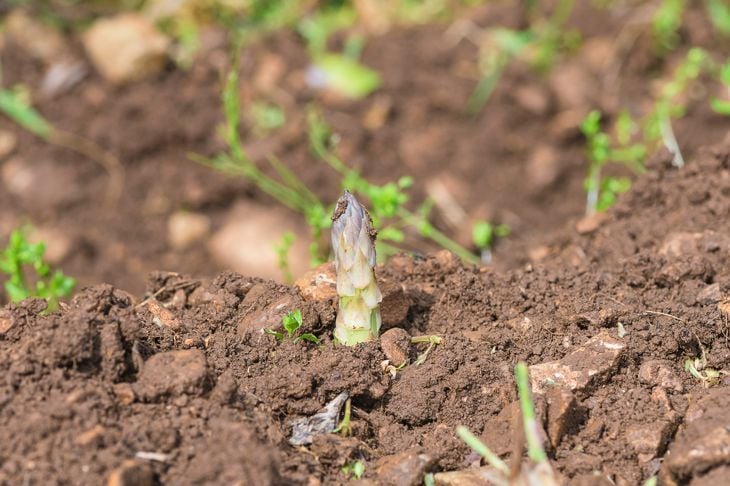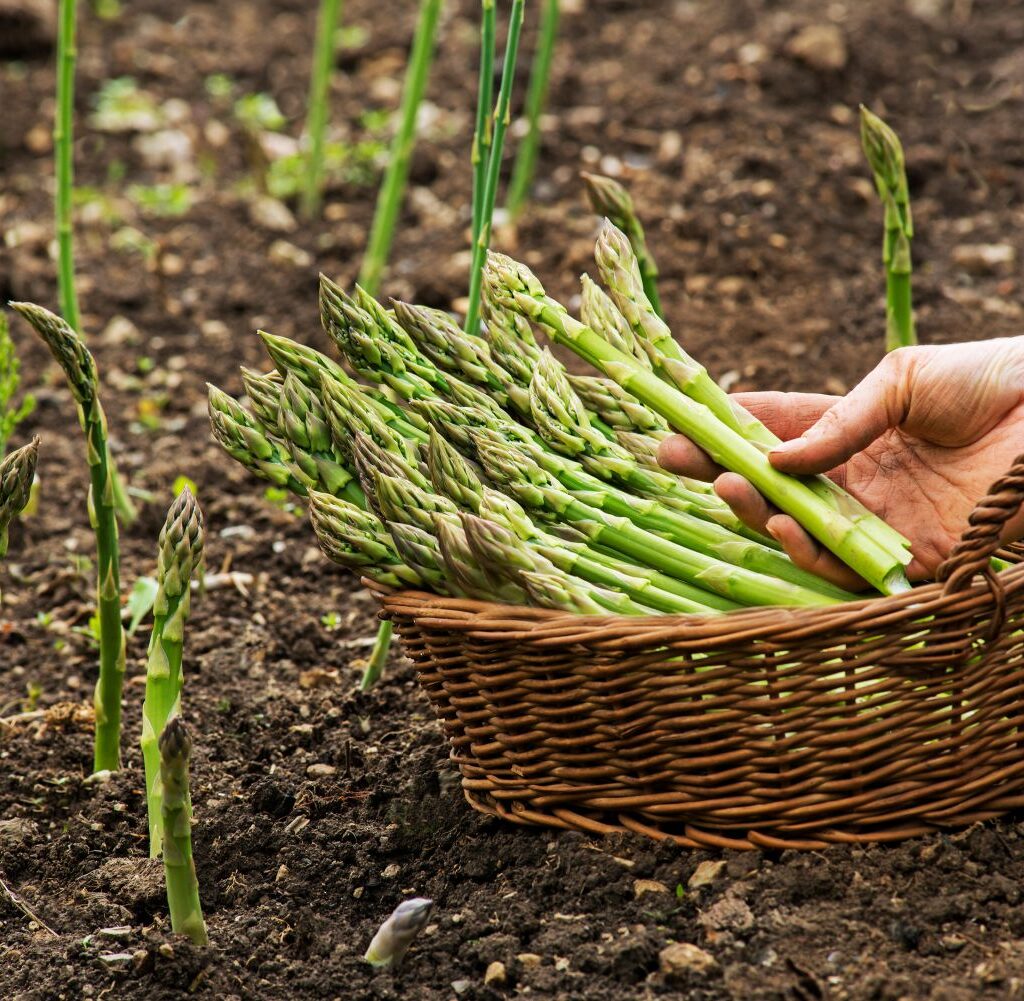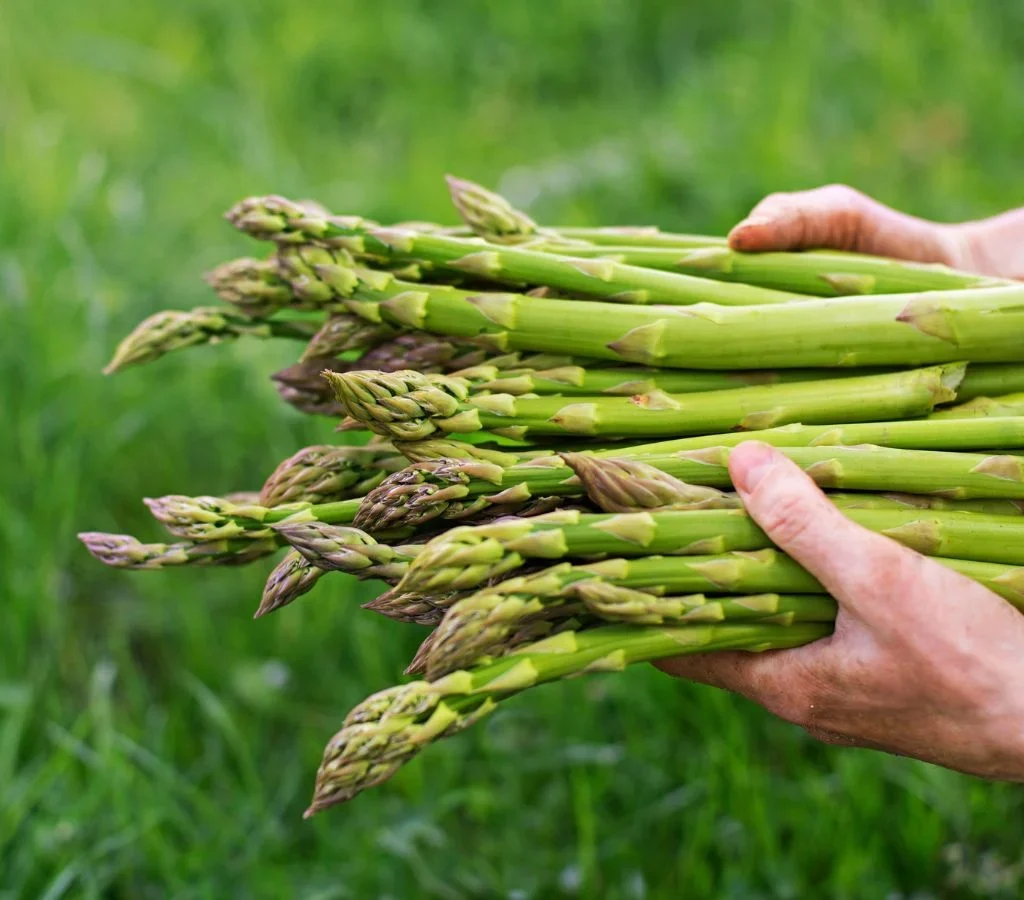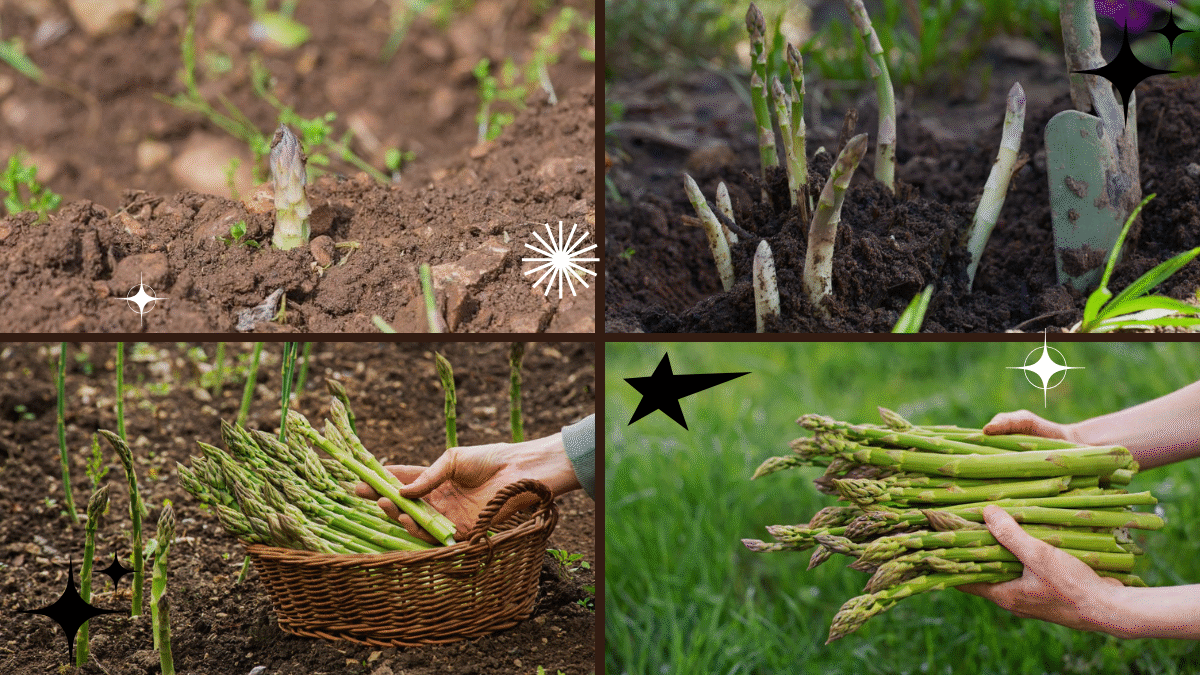Imagine stepping out into your backyard on a cool spring morning to harvest tender, sweet asparagus spears straight from your own garden. Fresh asparagus isn’t just tastier than the store-bought kind; it’s also one of the most satisfying and rewarding perennial vegetables you can grow.
With a little patience and proper care, your asparagus patch can produce for 15–20 years or more. Ready to savor fresh garden goodness? This detailed guide will walk you through everything you need to know about planting and growing asparagus successfully.

Why Grow Asparagus?
Asparagus is a prized vegetable for both its flavor and health benefits. It’s packed with vitamins A, C, E, K, and B6, as well as folate, fiber, and antioxidants. Plus, it’s low in calories and naturally supports digestion and heart health.
Better yet, once established, asparagus is a hardy perennial, meaning it comes back year after year with minimal effort — producing tender shoots each spring.

Choosing the Right Asparagus Varieties
There are two main types of asparagus you can grow:
- Green asparagus – The most common, known for its crisp texture and fresh, slightly grassy flavor.
- Purple asparagus – Sweeter and more tender, with striking purple spears that turn green when cooked.
- White asparagus – Grown by covering the spears with soil to block sunlight, producing a pale, delicate-flavored harvest.
Popular Varieties to Try:
- Jersey Giant – High-yielding, disease-resistant green variety.
- Mary Washington – A classic heirloom type with dependable harvests.
- Purple Passion – A stunning and sweet purple variety.

When and Where to Plant Asparagus
Timing is crucial for asparagus planting.
- In cool climates, plant in early spring as soon as the soil can be worked.
- In mild or warm climates, you can also plant in fall for a head start.
Best Planting Location:
- Choose a sunny spot that gets 6–8 hours of direct sunlight daily.
- The area should have well-draining, fertile soil with a pH between 6.5 and 7.5.
- Avoid areas with standing water or poor drainage.
Pro tip: Since asparagus is a long-lived perennial, select a permanent spot where it can grow undisturbed for years.

Starting with Crowns vs. Seeds
You can grow asparagus from either seeds or crowns (1-year-old root systems).
- Crowns are preferred by most gardeners because they establish faster and start producing harvestable spears within 2–3 years.
- Seeds are cheaper but take an extra year or two to reach harvestable size.
How to Prepare the Planting Bed
Asparagus thrives in rich, loose soil. Follow these steps to prep your planting area:
- Clear the area of weeds, rocks, and debris.
- Loosen the soil to a depth of 12–18 inches.
- Work in organic compost or well-rotted manure to improve fertility and drainage.
- Test the soil pH if possible — add garden lime to raise pH or sulfur to lower it.
Step-by-Step: How to Plant Asparagus Crowns
1. Dig Planting Trenches
- Dig a trench 12–18 inches wide and 6–8 inches deep.
- Space multiple trenches about 3 feet apart.
2. Add Soil Amendments
- Mix a little compost or bone meal into the bottom of the trench to enrich the soil.
3. Create Mounds
- Make small mounds of soil about 18 inches apart along the trench.
4. Place the Crowns
- Spread each asparagus crown over a mound, draping the roots evenly.
- Cover with 2 inches of soil.
5. Gradually Backfill
- As the spears grow, slowly fill in the trench with soil until it’s level with the garden bed by mid-season.
Watering and Mulching
- Keep the soil consistently moist but not soggy, especially during establishment.
- Water regularly in dry spells, providing about 1–2 inches per week.
- Apply a 2–3 inch layer of organic mulch (like straw or shredded leaves) to retain moisture and suppress weeds.
Fertilizing Asparagus
Asparagus is a heavy feeder. Boost your harvest with these tips:
- Apply a balanced fertilizer (10-10-10) in early spring as new growth begins.
- Fertilize again after the last harvest to nourish the plant for next year.
- Use organic compost or aged manure annually for long-term soil health.
When to Harvest Asparagus
Patience is key with asparagus:
- Year 1: Do not harvest. Allow plants to grow and build strong root systems.
- Year 2: Harvest lightly for 2–3 weeks once spears reach 6–8 inches tall.
- Year 3 and beyond: Harvest freely for 6–8 weeks each spring.
How to harvest:
Cut or snap spears off at ground level when they’re about the thickness of your finger.
Stop harvesting when spears thin out to pencil width — this allows the plant to regenerate energy for next year’s growth.
Ongoing Care and Maintenance
After the harvest season:
- Let remaining spears grow into tall, fern-like foliage.
- Cut down dead fronds to the ground in late fall after frost.
Weed control:
Keep the asparagus bed clean and weed-free, as weeds compete for nutrients and water.
Pests and diseases:
- Watch for asparagus beetles — handpick them or use organic insecticides.
- Prevent fungal diseases by avoiding overhead watering and spacing plants well.
Growing Asparagus in Containers
While asparagus prefers open ground, you can grow it in large, deep containers if space is limited.
- Use a container at least 18 inches deep and wide.
- Choose a well-draining potting mix enriched with compost.
- Crowns may not live quite as long in containers but can still produce for several years.
Fun Facts About Asparagus
- Asparagus plants can live and produce for 20+ years.
- The vegetable is a natural diuretic and has been valued since ancient Egypt and Greece.
- White asparagus is grown by mounding soil over the spears to keep them from photosynthesizing.
- Asparagus is one of the few perennial vegetables commonly grown in home gardens.
Final Thoughts
Growing asparagus takes a little patience upfront, but the long-term rewards are absolutely worth it. With a permanent asparagus bed, you’ll enjoy delicious, tender spears every spring for decades to come.
The key to success is choosing the right location, preparing the soil well, and giving the plants time to establish before harvesting heavily. Once established, this hardy perennial is relatively low-maintenance and a true garden treasure.
Ready to savor fresh garden goodness? Whether you’re starting with crowns or seeds, planting asparagus is a fulfilling, rewarding way to connect with nature — and your future harvests will be some of the sweetest, freshest veggies you’ll ever taste.





Leave A Comment